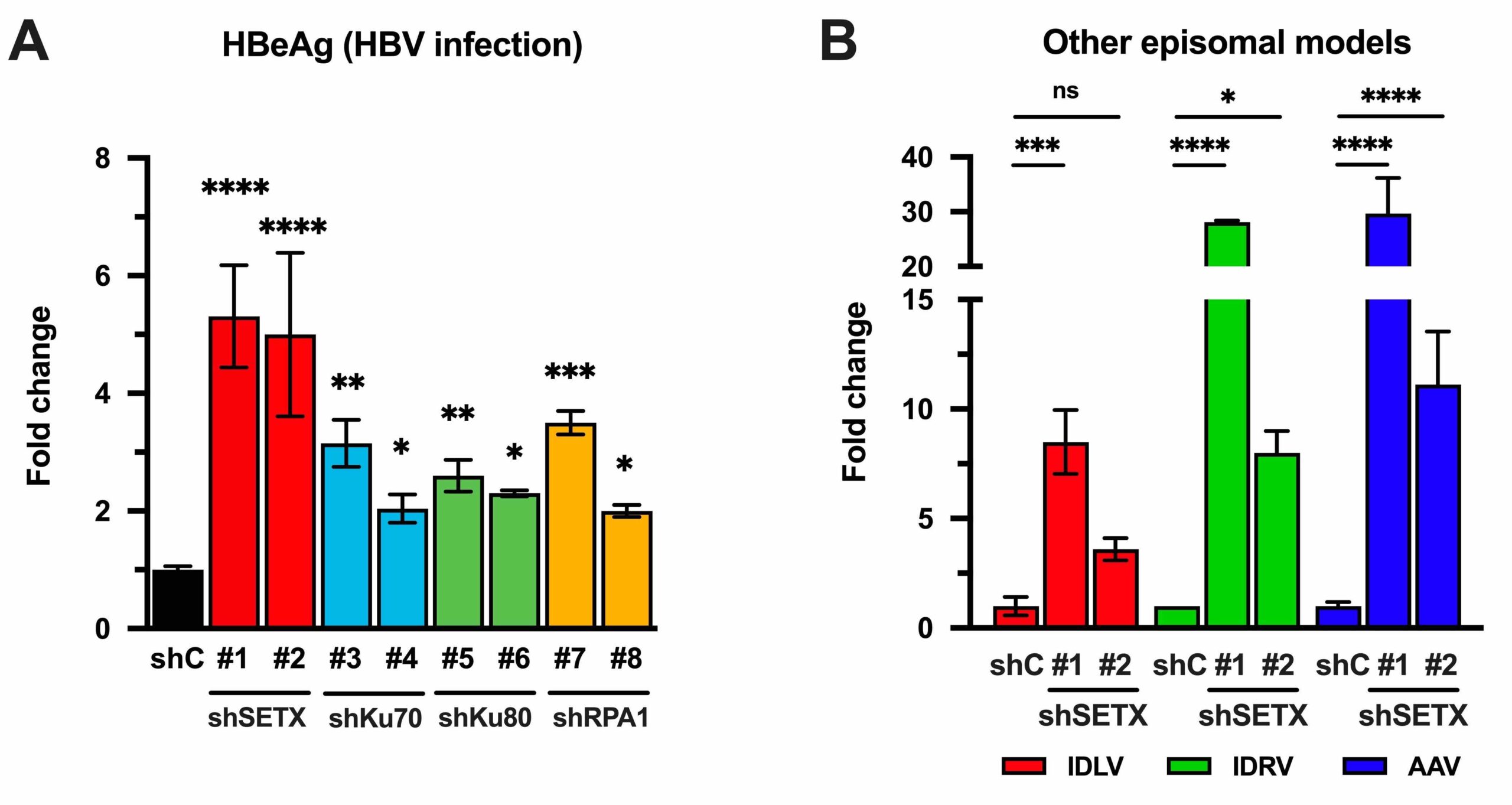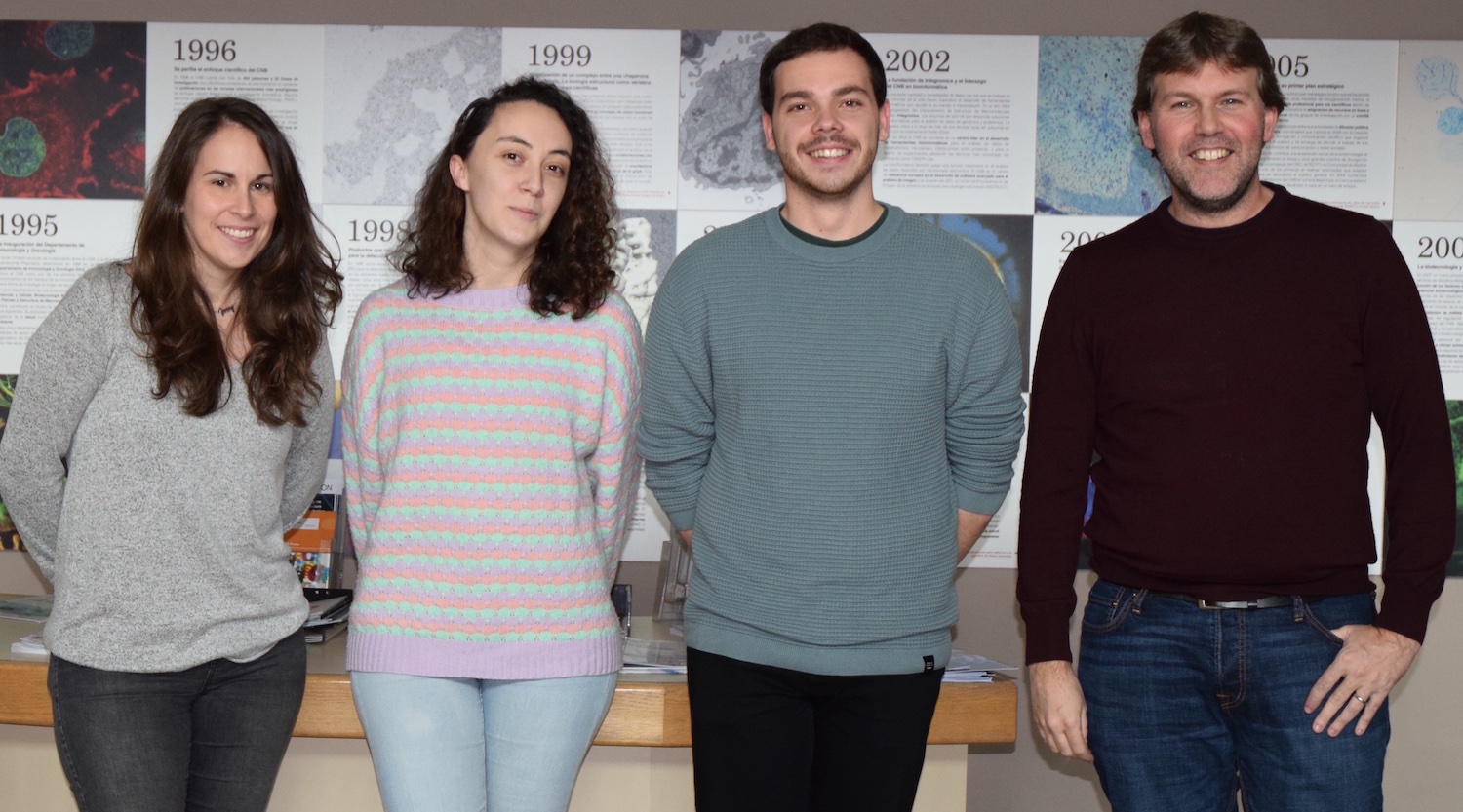Virus-host Interactions in Hepatitis B Virus Infection
RESEARCH GROUPS

Urtzi Garaigorta
Group Leader
Research Summary
Our laboratory is interested in understanding virus host interactions that regulate the outcome and pathogenesis of virus infections. Our main objective is to identify vulnerabilities that could be exploited to develop new strategies to treat hepatitis B virus infections, that are responsible of acute and chronic hepatitis, cirrhosis and hepatocellular carcinoma. In the last years, we have extended our interest to the development of antiviral treatments to other human viral infections.
Research Lines
Our research is focused on understanding cellular and molecular mechanisms that regulate hepatitis B virus (HBV) infection, including its pathological consequences. We use cell culture models of HBV infection to study the cellular requirements for the infection as well as to identify host factors that positively or negatively regulate the infection. In the last years, we have identified several cellular proteins (i.e.: Senataxin, Ku70 and Ku80…) that control HBV gene expression by restricting initial steps that are crucial for the establishment of infection.

Effect of topoisomerase inhibitors camptothecin (CPT) and etoposide (Eto) on reporter gene expression (A) and viral DNA integration (B) in hepatic cells transduced with lentiviral vectors that are either competent (ICLV) or deficient (IDLV) in vector integration.
One of our main lines of research is focused on understanding the mechanism(s) by which the identified cellular factors regulate HBV episomal DNA-derived gene expression. To do so, we combine gene silencing and overexpression strategies with the molecular characterization of viral and cellular gene expression analysis, focusing on transcriptomics approaches and chromatin immunoprecipitation analysis. The results from these studies point to a selective regulation of episomal DNA expression, which opens a venue for development of novel therapeutic strategies.
More recently we have extended these observations to other episomal DNA viral models including adeno-associated viral vectors that are being used in gene therapy. Our main objective here is to increase our knowledge of how episomal DNA-derived expression is regulated in order to develop new adjuvants for gene therapy. To complement these studies, we have developed a dual fluorescence reporter screening assay to simultaneously quantify the expression from episomal and chromosomal DNA templates, which in turn allows the identification of small molecules that selectively regulate episomal DNA-derived gene expression.
Finally, our group is also involved in the Antiviral Identification and Characterization Platform of the CNB, which pursues the development of novel antivirals against viruses with biomedical interest including: hepatic viruses, influenza viruses, viruses transmitted by mosquitos, coronaviruses…

Effect of topoisomerase inhibitors camptothecin (CPT) and etoposide (Eto) on reporter gene expression (A) and viral DNA integration (B) in hepatic cells transduced with lentiviral vectors that are either competent (ICLV) or deficient (IDLV) in vector integration.
Publications
Group Members
Group Leader
Urtzi Garaigorta
Lab assistant
Jennifer Moya Vaquero
Postdoctoral Researcher
Beatriz Chamorro Gorines
PhD candidates
Enara San Sebastian Casas
Adrián Coto Ramos
Rubén Gutierrez Molina

Funding
News
Cytolytic γδ T-cells and IFNγ-producing CD4-lymphocytes characterise the early response to MTBVAC tuberculosis vaccine
NPJ Vaccines. 2025 Mar 28;10(1):58. Felgueres MJ, Esteso G, García-Jiménez ÁF, Benguría A, Vázquez E, Aguiló N, Puentes E, Dopazo A, Murillo I, Martín C, Rodríguez E, Reyburn HT, Valés-Gómez M Abstract Infection with Mycobacterium tuberculosis (Mtb) can produce...
Replicating community dynamics reveals how initial composition shapes the functional outcomes of bacterial communities
Nat Commun. 2025 Mar 31;16(1):3002. Pascual-García A, Rivett DW, Jones ML, Bell T. Abstract Bacterial communities play key roles in global biogeochemical cycles, industry, agriculture, human health, and animal husbandry. There is therefore great interest in...
Rational Design Assisted by Evolutionary Engineering Allows (De)Construction and Optimization of Complex Phenotypes in Pseudomonas putida KT2440
Microb Biotechnol. 2025 Mar;18(3):e70132. Blázquez B, Nogales J. Abstract Beyond the rational construction of genetic determinants to encode target functions, complex phenotype engineering requires the contextualisation of their expression within the metabolic and...




